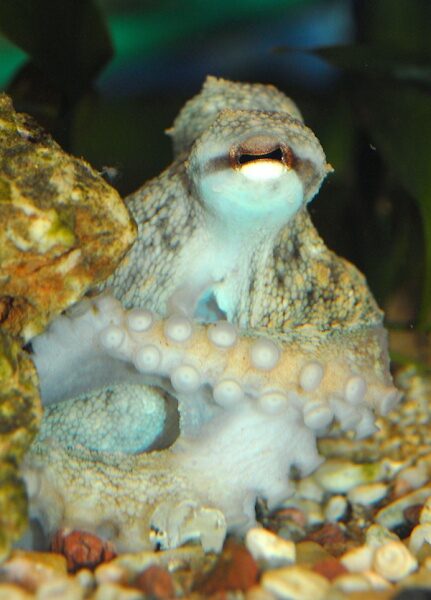Seminar 'Cephalopods, potential new models or just fancy slugs?' by Dr. Michael Kuba Th 14 May 14:00-15:00

Date
Location
Description
Dear all,
Biological Physics Theory Unit would like to invite you to a seminar by Dr. Michael Kuba this coming Thursday, 14 May.
Date: Th 14 May 2015
Time: 14:00 - 15:00
Venue: Seminar Room B503, Level/Floor B, Lab 1
Speaker: Dr. Michael Kuba, Max Planck Institute for Brain Research, Frankfurt
Title: Cephalopods, potential new models or just fancy slugs?
Abstract:
Few animals are as shrouded in mystery as modern cephalopods. On the one hand, they are seen as little more than turbocharged slugs, barley worth one’s attention, and possessing cognitive skills that are no more advanced than their arthropod cousins. On the other hand, they are seen as primates of the sea, falling short only of working miracles but otherwise capable of any trick or trait in the book. In all this, it can be hard to know what the true worth of studying cephalopods might be. Are they little more than a fancy out-group for comparative studies, or are there genuine questions that can only to be asked and then answered using cephalopods? In my talk I will give you several examples why cephalopods are not only useful toy to have but must have for several important research questions.
1. Muscular hydrostat – Cephalopods provide a unique opportunity to study a complex soft-bodied animal. How octopuses use their arms and suckers to collect information, or to move around in space, have direct implications and relevance to the construction of novel soft-bodied robots. I will provide several examples how non-invasive experiments in cephalopods were able to contribute to advances in this technology.
2. Skin chromatophores – Cephalopods have a unique dynamic coloration system for camouflage and communication, with muscular controlled organs in the skin that create complex patterns, either to camouflage themselves with the surrounding environment, or to communicate to conspecifics or other species. All this is achieved by the nervous system, with very few stations from sensory input to behavior output. I will provide examples of dynamic coloration-based communication and camouflage in cephalopods.
----------------------------------------------
We welcome all and look forward to seeing you at the seminar.
Best regards,
Momoko Zamami
Biological Physics Theory Unit, Okinawa Institute of Science and Technology Graduate University
Website URL
Attachments
Subscribe to the OIST Calendar: Right-click to download, then open in your calendar application.



